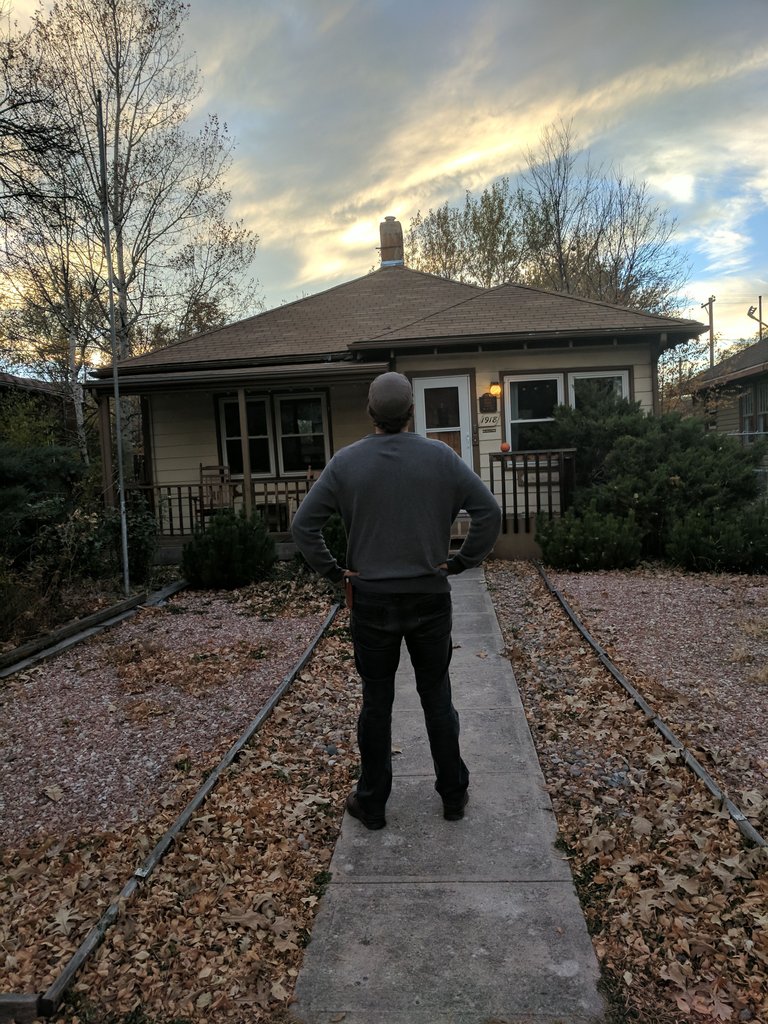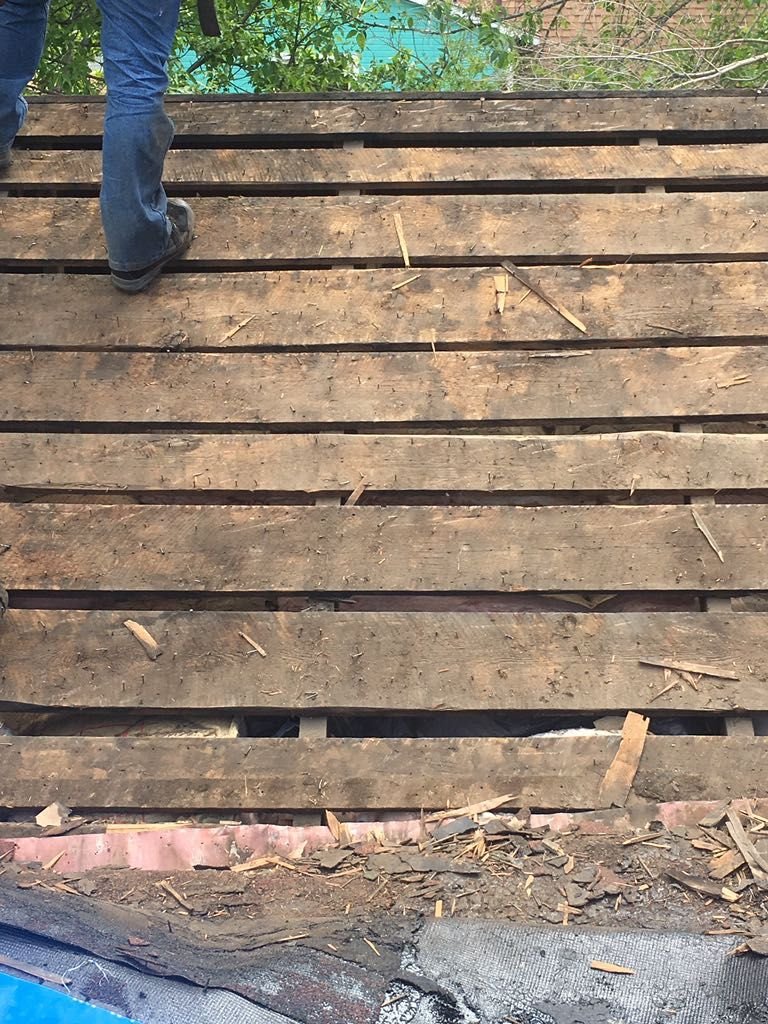 Hey homeowners! Listen up! My last post, https://steemit.com/construction/@brownsgreens/10-secrets-every-homeowner-should-know-about-the-roofing-industry, is going over pretty well so I figured I’d do another one for ya’ll about the do’s and don’ts of dealing with storm damage.
Hey homeowners! Listen up! My last post, https://steemit.com/construction/@brownsgreens/10-secrets-every-homeowner-should-know-about-the-roofing-industry, is going over pretty well so I figured I’d do another one for ya’ll about the do’s and don’ts of dealing with storm damage.
I am a project manager for Homestead Roofing in Colorado Springs, I do everything from inspections to estimates to invoicing to marketing. I have learned a LOT in my year and a half doing this. Though I started out in steemit posting about my gardening business, Brown’s Greens, after my time as a roofer I figured I’d do some posts about what I have learned and how it can help EVERY homeowner stay out of bad situations. Almost all the re-roofs we do here are payed for by insurance claims so I have gotten a lot of experience with the whole claim process and I’ve helped hundreds of clients understand how it works. This post includes 4 things to know before filing an insurance claim for storm damage on your house. It’s dense and has a lot of information, but I guarantee that you will be thankful you read it if your house ever gets hit with a damaging storm.
CALL A ROOFER FIRST
A common mistake for homeowners when a hailstorm or windstorm hits their area is to call their insurance company first and ask them to inspect for damage. DON’T DO THIS. When you call your insurance company and ask to get your roof/house inspected for storm damage, you have just filed a claim. The reason this is dangerous is that if you are not sure that you actually have enough storm damage to get a claim approved to replace your roof or windows or whatever, you can end up with a zero-pay claim. This claim goes on your record and it can affect/raise your premiums in the future, but you don’t get the benefit of your repairs being payed for by insurance. These companies have outlined parameters for their inspectors for what constitutes enough damage for a claim. That’s why it’s good to call a trusted, local roofer who knows the insurance process first before calling in a claim. Most roofing companies will inspect your house for free and let you know if the damage is sufficient to get a claim approved. But make sure to ask the roofer some questions first before asking him to inspect your house, refer to my article link at the top of this post to get some ideas about how a professional and ethical roofer should conduct himself.
TALK TO YOUR AGENT
So now you have had a roofer come and look at your house, and he’s told you that there is sufficient damage for a claim. Is it time to file? Not quite yet. Talk to your insurance agent about the situation first, and bare minimum ask him these questions below. Knowing the answer to these will help you determine whether it’s even worth filing a claim, and your roofer or contractor should be able to help you estimate the cost of your repairs which will help you decide this as well.
“Do I have an ACV policy or an RCV Policy?” - ACV/RCV differences affect how much money you will end up getting to do your repairs. Here’s how they differ: ACV means Actual Cash Value. If you have an ACV policy, you will only receive one check from insurance, and it will not be enough to cover all your repairs. ACV’s give you a check upfront that excludes your deductible and depreciation money (depreciation is the drop in value of the components of your house over time). RCV means Replacement Cost Value, and it’s a way better coverage. Like ACV, you will get a check upfront that has your deductible and depreciation taken out of it, but unlike ACV, that’s not your only check. Once you complete your repairs and your contractor sends in an invoice to insurance, all the depreciation money they withheld from the initial payment is then issued to you. So to put it simply, RCV policies are responsible for paying the entire cost of all your storm damage repairs, they just pay you in two increments. Except for your deductible (they will always withhold that amount) but otherwise you shouldn’t pay anything out-of-pocket with an RCV.
“What Kind of Deductible Do I Have?” Always make sure you understand your deductible before filing a claim. Ask if it is a percentage deductible or a flat deductible. Percentage deductibles can really hurt you. They are figured by charging 1% or 2% of your house’s insured value as your deductible. So for example, if your whole house is insured and it’s worth $400,000, your deductible for a claim is going to be $4000-$8000, depending on the percent your insurance company uses. That’s could be the entire cost of a re-roof out of your pocket! Flat deductibles are just a flat rate, usually $500-$1000, so definitely make sure you know which one you have.
“Do I Have Code Upgrade On My Policy?” This one is not quite as critical for the homeowner to know, but in some situations it can make a huge difference in out-of-pocket expense. Code Upgrade means that if there are items on your house that do not meet building codes in your area, your claim will pay to have those items fixed, even if they are not directly storm damaged. The biggest example I see of this in roofing is having to re-do the decking on a house. The decking is the wood sheets that your shingles or tiles fasten to. In Colorado, if these wood sheets or boards have more than a ¼” gap between them, new decking must be installed over the entire roof. A lot of houses that were built before the 1970s have “spaced decking”, so this problem comes up with these older houses. A full re-deck can be thousands of dollars, and if a homeowner does not have code upgrade, they’ll have to pay for this themselves. Below is a photo of a job I did showing the spaced decking that I had to replace.

BE ABLE TO INTERPRET YOUR CLAIM DOCUMENT
So now you have filed a claim, your adjuster has assessed the damage, and he/she hands you or emails you your claim document, or "estimate" as they are sometimes called. You look at it and say, “WHA??” These documents can look very cryptic and difficult to understand at first. But it is important to know a little about them so that you don’t get taken advantage of by a contractor. Ultimately, ask your insurance agent or even your adjuster to help you read the claim document and understand the numbers, but I’ll get you started. Either at the beginning or the very end of the claim document there should be a “Summary” page, usually reads “Summary of Dwelling” or “Summary of Coverage A” or something similar. This page will tell you your total claim amount, your deductible, and the actual amount you will get from insurance. Look for the “Replacement Cost Value” line, this is your entire claim and it should be the same amount that your roofer or contractor is charging you, unless you have additional out-of-pocket items with the contractor. Now look at your “Net Claim If Depreciation Is Recovered” line, this is the total amount you will receive from insurance if you complete all the repairs and your contractor sends the insurance company an invoice. For an RCV policy, this line is simply your “Replacement Cost Value” minus your deductible. For an ACV policy, it’s the “Replacement Cost Value” minus the deductible AND the depreciation. Those two figures are pretty important to understand right off the bat.
UNDERSTAND THE SUPPLEMENTING PROCESS
Once you have filed your claim, you’ll choose your contractor/s to complete all the claim repairs. If the contractor is thorough and professional, he’s probably going to go through a process called “supplementing” with your insurance. Supplementing means adding additional funds into your claim. For roofing, I do this on almost every claim I handle. Insurance adjusters often forget items (or intentionally leave them off) in their claim document that are required to re-roof a house. Insurance companies are businesses just like any other business, and the less they pay out in claims, the more money they make. Some contractors just eat this extra cost, some contractors just don’t do the items that the adjuster did not include in the claim. Neither of these are proper practices, if there are additional items that the contractor needs to have funded, he/she should attempt to supplement these with the homeowner’s insurance company. Now, this is important to understand because it will increase your job cost total. But that’s OK. It’s not costing you any extra out-of-pocket, your contractor is simply increasing your claim to cover the cost of doing repairs properly. I get a lot of customers who get nervous when they see their “Replacement Cost Value” line in their document start to increase, but I assure you this is common and justified practice.
Thanks for reading, I hope I didn’t overwhelm you. Hopefully you never have to file a claim but if you do, I guarantee knowing these four steps will make the whole process smooth and comfortable!

Good advice 👍
Hi, I'm new on Steemit but when I saw that you upvoted my comment under a text I checked out your account.
And I can only say: Wow, I like it.
Great content! Keep going on!
Maybe you can take a look at my account as well...
I'm author for essays, comments reviews (e.g. for films, TV shows, etc.) in german and english language.
Now I also try to publish comments about economy, cryptocurrencies, because these are also topics of my daily life.
And maybe you can also follow me as I followed you and check out my texts.
I hope you take a look!
Keep going on with your nice work! I like it!
great like your this last post my dear.thanks for sharing.
very nice post
yeah,what you said is true actually i really accept all what u said in this post of yours,and again i saw you upvote my work i really appriaciate.
An interesting comment, but it is more profitable to start a new day every day ;)
I have heard from older people that if you submit big insurance claims, for example for a roof damaged by ice dams, the insurance companies can cancel your insurance and it can be expensive to find new insurance.
Thank you for the advice.
pocketsend:1000@browngreens,
Successful Send of 1000
Sending Account: planetenamek
Receiving Account: browngreens
New sending account balance: 927646
New receiving account balance: 999
Fee: 1
Steem trxid: 3cc1096a1d94d378d3351a3e7f01418539f7dd2f
Thanks for using POCKET! I am a confirmer bot for fun, view my source confirmer code here.
what you post I like, before I apologize to you, I want to be asked in the vote in my post .. 😢 😢by @ afrizal1990
wow increadible post. nice work on steemit.
bd er na tmi?
♥♥very well post and good job♥♥
terima kasih banyak sobat, telah memberikan dukungan kepada saya, salam sahabat komunitas steemit
@brownsgreens
You did great! Being my first time of visiting your blog. I enjoyed your post
Wonderful post ever !!!1
Always an urghhhh for legal language. Providing tips like this is àlways good thing @brownsgreens
Thank you for information. The best information I read.
i preffer to make it financed by bank rather insurance
your post is amazing! you have great info! have a nice day!
Yep 😊😊 Nice post by the way
Thank you for your advice, it is very useful for me @brownsgreens
Nice one
Great advice/information 👍
Insurance is very important for us. I have little knowledge about it. But after reading your post I have learnt a lot about filling form.